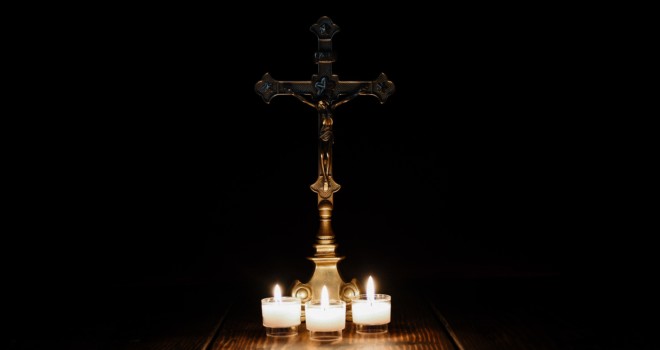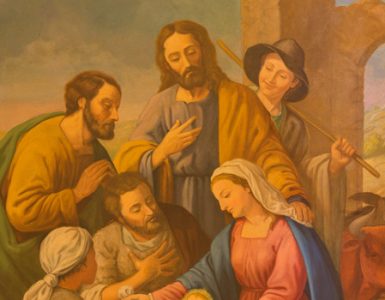O most blessed Light divine,
Shine within these hearts of yours,
And our inmost being fill.Veni, Sancte, Spiritus
When I was a child, I’d walk outside on those balmy summer evenings and sigh as I’d turn toward heaven. The stars pinning the inky tapestry of mystery always beckoned me in its silence and vastness. It was easy to appreciate daytime, because the sun illuminated every minute detail surrounding me: veins on the deciduous silver maples, intricate blades of grass, delicate tendrils of flowers, and even the cottony appearance of cumulus clouds.
Classic spiritual writer
Walter Hilton wrote a reflection in his book, The Scale (Ladder) of
Perfection, about how night and day symbolize God’s love for us, in that He
provides the night as a bridge between two days. In our daily walk with God, we
can attune ourselves to God’s message through His creation. In this article, we
will explore the grandeur of darkness and light.
The Meaning of Night and Day in Our Spiritual Journey
Hilton calls the love of
God “a good night,” because it bridges the days. In Scripture, we read a lot
about the spiritual symbolism of darkness and light – darkness signifying evil
and deception, light being of God i.e. “I am the Light of the World” (see John
8:12). However, Hilton wants us to learn that both night and day are of God. If
we return to the beginning, we remember that God created both the darkness and
the light; therefore, both are inherently good and can teach us something about
the fluctuations of our spiritual growth.
False Light vs. True Light
If the night bridges the light between two days, we can deduce the possibility that there are two different lights in our spiritual walk: one is a false light i.e. the love of the world, while the second is the true light i.e. the love of God. When we are spiritually blind, we may be walking in that dark night. Our senses fail us. We cannot ascertain between the two lights. When this happens, we must walk by way of what St. John of the Cross calls obscure faith, which means faith that is unclear but certain.
Darkness and Light Can Overlap
Once we reject the false
light of the world’s pomp and glitz, we have to enter the night for a period of
time i.e. the dark night of the soul. This prepares us to fully receive the
true Light of the World. This happens, because we cannot bear to move from
false light to true illumination without first crossing the bridge of the
night, or purgation of the senses.
True freedom happens in
this night, because we’re not bound to oblige the world. We have shed the
pretenses and facades that have kept us living as mere creatures of the world
and traded the false light for a wholehearted search for God. Taking that step
between the first day (false light) and second day (true light) by way of the
“good night,” or purgation of the senses, we see that darkness and light begin
to overlap.
Perhaps this is why
sunrises and sunsets are so appealing to most of us. It’s because the
transition from darkness to light coalesces into a brilliant mélange of
shadows, contrast, and colors. Eventually, we realize that the darkness becomes
our light. The darker the night of the purgation, the more brilliant will be
our day, or living in union with Jesus as the True Light.
Holy vs. Unholy Darkness
I’ve written before about the difference between holy and unholy darkness, but here is a brief summary of each: holy darkness occurs when one’s soul is in a state of grace, yet s/he feels as if there is a shroud of mystery surrounding his/her spiritual progress. Very little is known of how the soul is growing toward God; the only apparent reality is one’s sin. In addition, God seems distant, even absent, as the soul no longer receives consolations or signs that have previously given it strength to persevere.
On the contrary, unholy darkness is a consequence of sin, particularly mortal sin. When one lives with deep-rooted vices and perhaps has unconfessed mortal sins on the soul, s/he will also experience this darkness, but its origin is entirely different than the initiation of the holy darkness by God. Unholy darkness is also very lonely, and the soul feels its distance from God purely because of lack of reconciliation or intention to amend one’s life.
Here’s a brief
illustration of holy versus unholy darkness.
| HOLY | UNHOLY |
| Peaceful | Restless |
| Humble | Vain |
| Seeks God | Seeks the world |
| Receptive | Withdrawn |
| True Light | False light |
| Detached from evil | Attached to sin |
| Attached to God | Distant from God |
| Freedom | Bondage |
| Contemplative | Frenzied |
| Quiet | Noisy |
An interesting final point is this: both unholy and holy darkness, i.e. the “good night,” are painful, hidden, but potentially profitable to the soul. This is because Jesus is working and present in both types of darkness as the True Light. We receive Him as such when we cooperate with the grace offered to us in the nighttime of our senses.
It is purely by way of God’s mercy that the soul may profit from unholy darkness, but only when it is purified and renders itself to God through humble submission and contrition. The bounty of love God offers us in the day reflects our willingness to undergo what is arduous and difficult throughout the uncertain and trying seasons of life that feel like darkness.
✠
Photo by Josh Applegate on Unsplash












